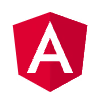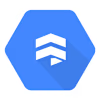Fullstack web development
Contact for pricing
About this service
Summary
What's included
User Interface (UI) Design
Deliverables may include wireframes, mockups, and interactive prototypes that showcase the visual and interactive elements of the application's front-end.
Front-End Code
The actual code files that make up the user interface, including HTML, CSS, and JavaScript files, along with any libraries or frameworks used for front-end development.
Back-End Code
This includes server-side code written in programming languages like Java, Php, Python, or others. It encompasses the business logic, data processing, and integration with databases or external APIs.
Database Schema and Models
he database structure and schema design, along with any associated scripts or migration files required for setting up and configuring the database.
API Documentation
If the application provides an API (Application Programming Interface) for interaction with external systems or for third-party developers, comprehensive documentation explaining the endpoints, request/response formats, and authentication mechanisms may be provided.
Testing Artifacts
This includes test plans, test cases, and automated tests that ensure the quality and functionality of the application.
Deployment and Configuration Scripts
Scripts or instructions for deploying the application to a hosting environment, along with any necessary configuration files or setup guides.
Project Documentation
This can include architectural diagrams, technical specifications, installation guides, and any other relevant documentation that helps understand and maintain the application.
Skills and tools
Fullstack Engineer
Software Architect

Angular

Cloud Firestore

Google Cloud Functions

Java

Spring Boot
More services
